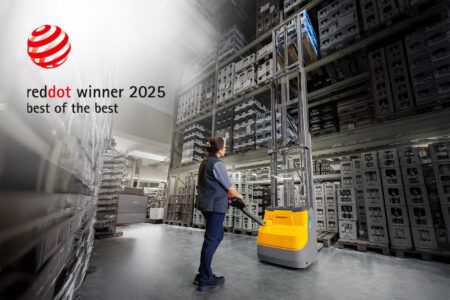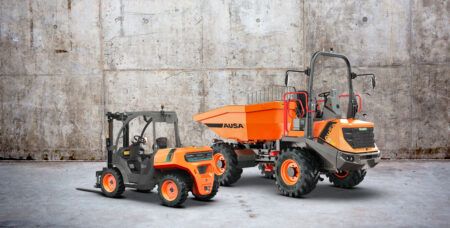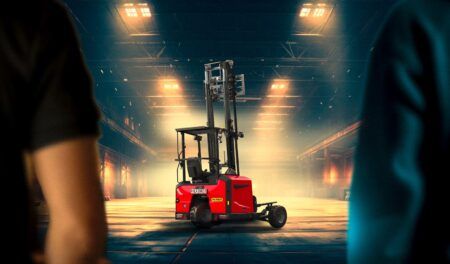Companies short on storage space often opt for a narrow-aisle warehouse, preferring to pack their products high to minimise aisle width. This means reducing the safety clearances between each side of the industrial truck and the rack from their usual 500 mm to a minimum of 100 mm.
It also places greater demands on the materials handling equipment, requiring it to be strong, compact and manoeuvrable in order to transport and lift long loads along the narrow aisles.
Hubtex’s new PhoeniX 2829-XS and 2821-S series have been developed specifically for use in narrow aisles. Lift truck drivers can manoeuvre safely while also lifting their customers’ specific loads without causing any damage. This is because the vehicles are compact and come equipped with integrated rack guidance systems such as mechanical, inductive or optical track guidance.
“Space-saving sit-down or stand-up cabs also give lift truck drivers an unbeatable all-round view,” says Michael Röbig, head of product management. “ At the same time, assistance systems such as the mobile personnel protection system fitted to the vehicle, which uses laser scanners, helps to improve employee safety even further.”
Assistance systems: an optimised workflow for narrow aisles
Besides track guidance and camera systems, it is primarily the Hubtex Load Manager (HLM) and electronic load chart that help drivers to handle bulky, long or heavy loads. The HLM is an electronic device with 99 freely programmable lift height positions. The lift mast stops at the pre-selected rack compartment level. The system works differently depending on whether goods are being moved in or out of storage, saving valuable time while also reducing the risk of damage to goods in storage. This is because there is no danger of goods being damaged through uncontrolled penetration into the rack compartment.
Another feature, the electronic load chart, uses sensors to record the angle of the fork carrier, the centre of gravity of the load, its weight and its lifting height. The display screen shows the driver how high their goods are allowed to be lifted. Exceeding the permitted lifting height or other parameter thresholds will trigger an overload message. Depending on how it is configured, the system can also instigate overload actions: the lifting process can be stopped automatically, the symbol on the screen can turn red, and an acoustic warning can sound. As long as the symbol stays green, the goods can be lifted safely to their maximum height.





